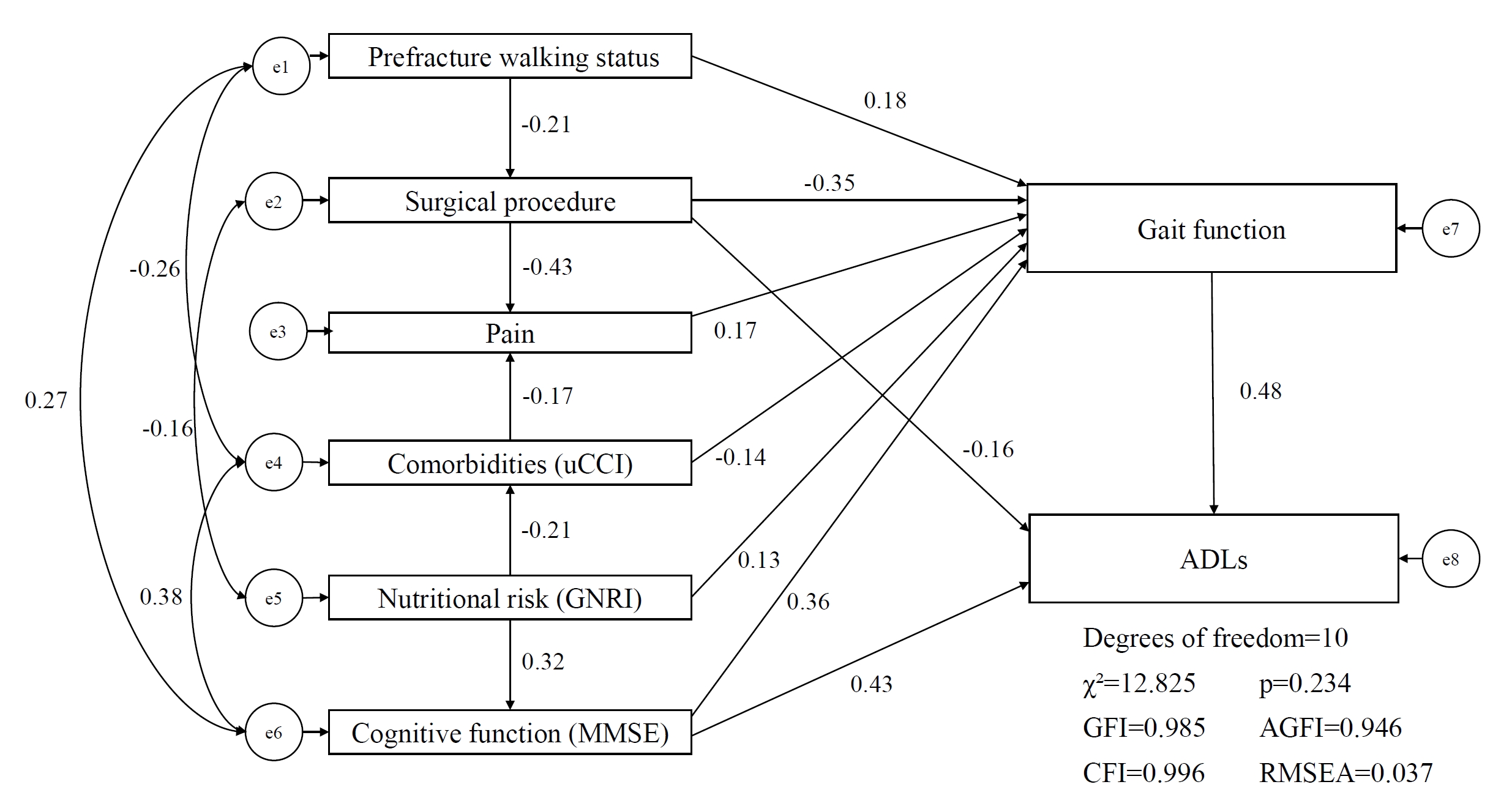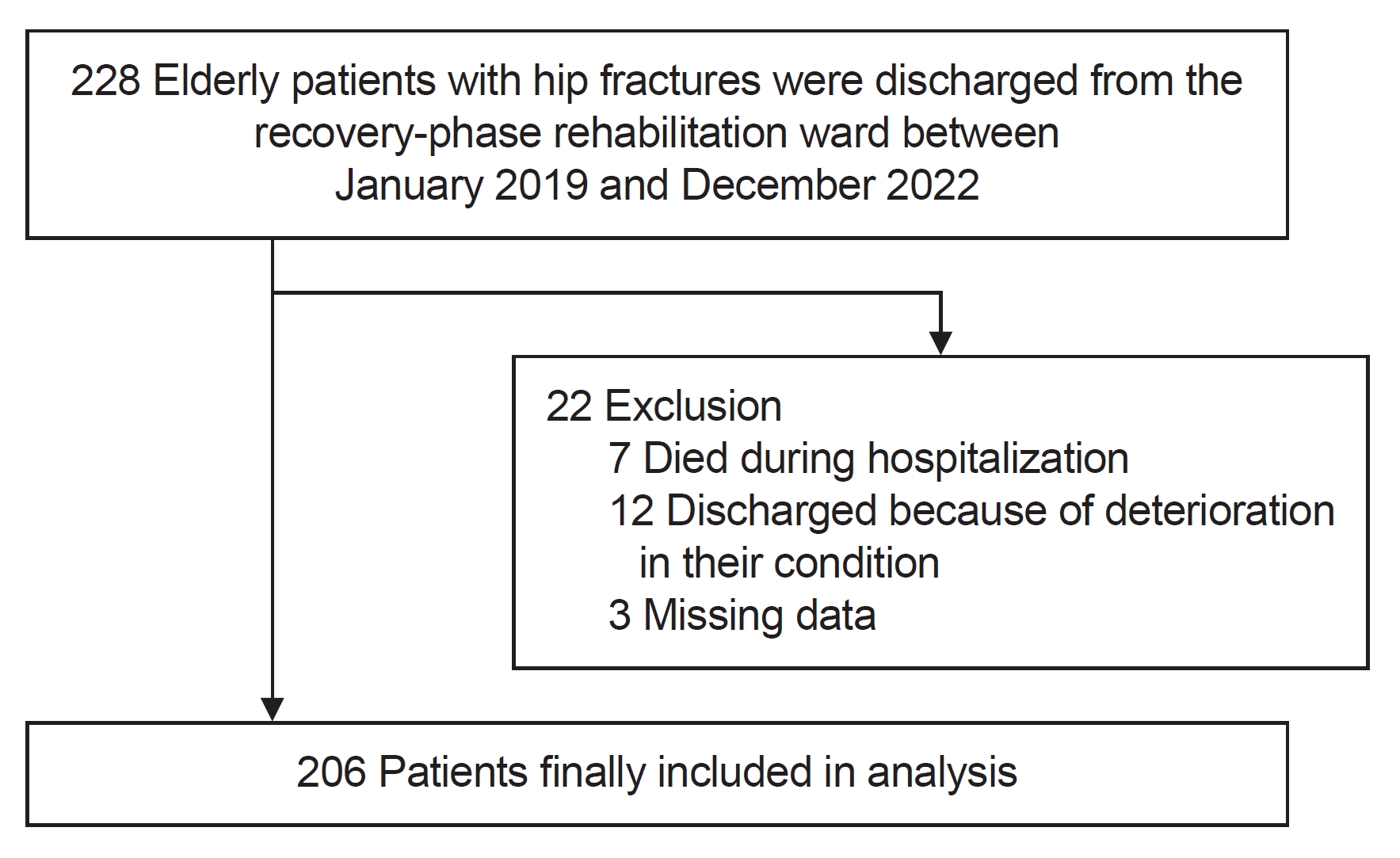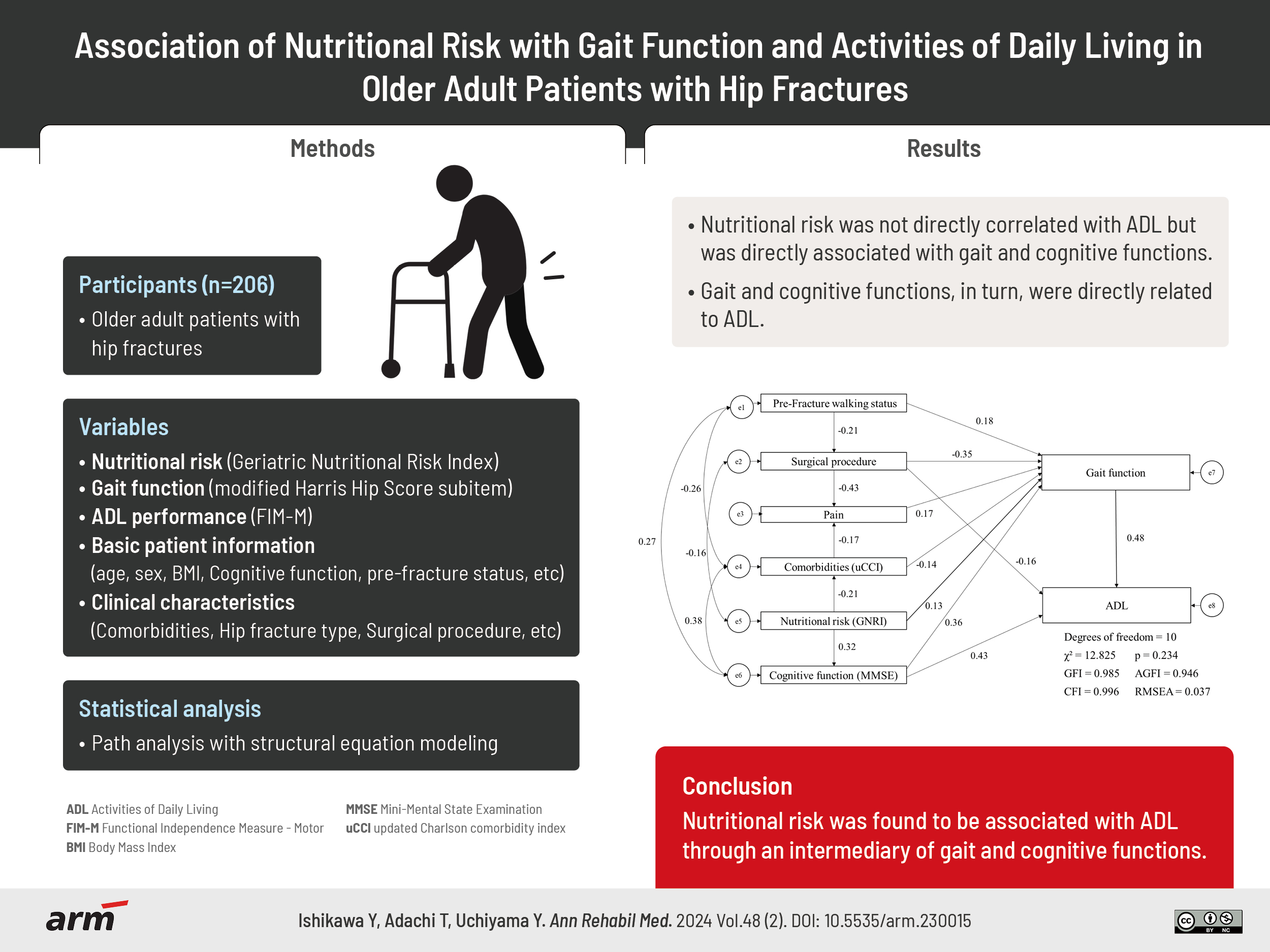4. Bohl DD, Shen MR, Hannon CP, Fillingham YA, Darrith B, Della Valle CJ. Serum albumin predicts survival and postoperative course following surgery for geriatric hip fracture. J Bone Joint Surg Am 2017;99:2110-8. Erratum in: J Bone Joint Surg Am 2018;100:e41.

7. Drevet S, Bioteau C, Mazière S, Couturier P, Merloz P, Tonetti J, et al. Prevalence of protein-energy malnutrition in hospital patients over 75 years of age admitted for hip fracture. Orthop Traumatol Surg Res 2014;100:669-74.


8. Helminen H, Luukkaala T, Saarnio J, Nuotio M. Comparison of the Mini-Nutritional Assessment short and long form and serum albumin as prognostic indicators of hip fracture outcomes. Injury 2017;48:903-8.


9. Goisser S, Schrader E, Singler K, Bertsch T, Gefeller O, Biber R, et al. Malnutrition according to Mini Nutritional Assessment is associated with severe functional impairment in geriatric patients before and up to 6 months after hip fracture. J Am Med Dir Assoc 2015;16:661-7.


10. Inoue T, Misu S, Tanaka T, Sakamoto H, Iwata K, Chuman Y, et al. Pre-fracture nutritional status is predictive of functional status at discharge during the acute phase with hip fracture patients: a multicenter prospective cohort study. Clin Nutr 2017;36:1320-5.


11. Nishioka S, Wakabayashi H, Momosaki R. Nutritional status changes and activities of daily living after hip fracture in convalescent rehabilitation units: a retrospective observational cohort study from the Japan Rehabilitation Nutrition Database. J Acad Nutr Diet 2018;118:1270-6.


12. Liu HY, Shyu YL, Chou YC, Seak CJ, Lin YC, Tsai PJ, et al. Combined effects of cognitive impairment and nutritional trajectories on functional recovery for older patients after hip-fracture surgery. J Am Med Dir Assoc 2022;23:1962.e15-20.


15. Inoue T, Misu S, Tanaka T, Kakehi T, Ono R. Acute phase nutritional screening tool associated with functional outcomes of hip fracture patients: a longitudinal study to compare MNA-SF, MUST, NRS-2002 and GNRI. Clin Nutr 2019;38:220-6.


16. Thorsdottir I, Jonsson PV, Asgeirsdottir AE, Hjaltadottir I, Bjornsson S, Ramel A. Fast and simple screening for nutritional status in hospitalized, elderly people. J Hum Nutr Diet 2005;18:53-60.


17. Neelemaat F, Meijers J, Kruizenga H, van Ballegooijen H, van Bokhorst-de van der Schueren M. Comparison of five malnutrition screening tools in one hospital inpatient sample. J Clin Nurs 2011;20:2144-52.


18. Bouillanne O, Morineau G, Dupont C, Coulombel I, Vincent JP, Nicolis I, et al. Geriatric Nutritional Risk Index: a new index for evaluating at-risk elderly medical patients. Am J Clin Nutr 2005;82:777-83.


19. Liu N, Lv L, Jiao J, Zhang Y, Zuo XL. Association between nutritional indices and mortality after hip fracture: a systematic review and meta-analysis. Eur Rev Med Pharmacol Sci 2023;27:2297-304.

20. Edwards PK, Queen RM, Butler RJ, Bolognesi MP, Lowry Barnes C. Are range of motion measurements needed when calculating the Harris Hip Score? J Arthroplasty 2016;31:815-9.


21. Randa L, Sharma-Sharma S, Franz M, Auais M. Providing evidence for content validity of the most frequently used hip specific recovery outcome measures in hip fracture studies: an International Classification of Functioning approach. Disabil Rehabil 2023. doi:
10.1080/09638288.2023.2216026. [Epub ahead of print].


23. Osawa Y, Hasegawa Y, Seki T, Amano T, Higuchi Y, Ishiguro N. Significantly poor outcomes of total hip arthroplasty after failed periacetabular osteotomy. J Arthroplasty 2016;31:1904-9.


25. Quan H, Li B, Couris CM, Fushimi K, Graham P, Hider P, et al. Updating and validating the Charlson comorbidity index and score for risk adjustment in hospital discharge abstracts using data from 6 countries. Am J Epidemiol 2011;173:676-82.


26. Ortiz-Alonso FJ, Vidán-Astiz M, Alonso-Armesto M, Toledano-Iglesias M, Alvarez-Nebreda L, Brañas-Baztan F, et al. The pattern of recovery of ambulation after hip fracture differs with age in elderly patients. J Gerontol A Biol Sci Med Sci 2012;67:690-7.


27. Cederholm T, Barazzoni R, Austin P, Ballmer P, Biolo G, Bischoff SC, et al. ESPEN guidelines on definitions and terminology of clinical nutrition. Clin Nutr 2017;36:49-64.


28. Li Y, Liu F, Xie H, Zhu Y. Investigation and analysis of frailty and nutrition status in older adult patients with hip fracture. Nutr Clin Pract 2023;38:1063-72.


30. Rodríguez-Mañas L, Féart C, Mann G, Viña J, Chatterji S, Chodzko-Zajko W, et al. Searching for an operational definition of frailty: a Delphi method based consensus statement: the frailty operative definition-consensus conference project. J Gerontol A Biol Sci Med Sci 2013;68:62-7.


36. Cabrerizo S, Cuadras D, Gomez-Busto F, Artaza-Artabe I, Marín-Ciancas F, Malafarina V. Serum albumin and health in older people: review and meta analysis. Maturitas 2015;81:17-27.













